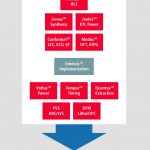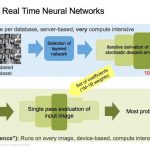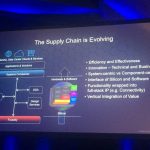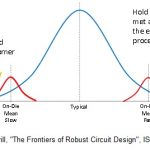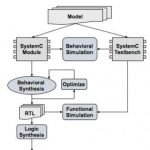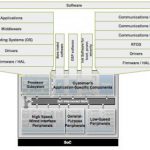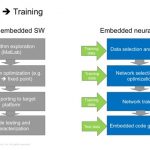Everyone knows that verification is hard and is consuming an increasing percentage of verification time and effort. And everyone should know that system-level verification (SoC plus at least some software and maybe models for other components on a board) is even harder—which is why you see hand-wringing over how incompletely… Read More
Digital Design Trends – A Cadence Perspective
I talked with Paul Cunningham (VP front-end digital R&D) at CDNLive recently to get a Cadence perspective on digital design trends. He sees needs from traditional semiconductor companies evolving as usual, with disruption here and there from consolidation. But on the system side there is explosion in demand – for wearables,… Read More
Neural Networks Poised to Make Big Changes in Our World
Probably the most interesting thing about Neural Networks is how they can be used for complex recognition tasks that we as people can easily perform but we might have a lot of trouble explaining how. One very good example of a problem that Neural Networks can tackle is determining when people are making a fake smile. Intuitively we… Read More
The Most Important Point You May Have Missed at CDNLive 2016!
This was the best keynote lineup I can remember at a user group meeting. All four speakers are visionaries but from very different perspectives. The video of the event will be up later this month but from my first count the word “System(s)” was mentioned 32 times and the underlying message will transform the semiconductor industry… Read More
Analog Design Verification — Traceability is Required
Digital verification engineers have developed robust, thorough metrics for evaluating design coverage. Numerous tools are available to evaluate testbenches against RTL model descriptions — e.g., confirming that simulation regressions exhaustively exercise signal toggles, RTL statement lines, individual statement… Read More
The Latest in Static Timing Analysis with Variation Modeling
In many ways, static timing analysis (STA) is more of an art than a science. Methodologists are faced with addressing complex phenomena that impact circuit delay — e.g., signal crosstalk, dynamic I*R supply voltage drop, temperature inversion, device aging effects, and especially (correlated and uncorrelated) process… Read More
SystemC and Adam’s Law
At DVCon I sat in on a series of talks on using higher-level abstraction for design, then met Adam Sherer to get his perspective on progress in bringing SystemC to the masses (Adam runs simulation-based verification products at Cadence and organized the earlier session). I have to admit I have been a SystemC skeptic (pace Gary Smith)… Read More
Software-Driven Verification and Portable Stimulus
I was at every single lunch at DVCon, not because the food was that great (it wasn’t bad) but because the topics were all interesting. The Wednesday lunch, hosted by Cadence, was a panel on software-driven verification and portable stimulus, moderated by Frank Schirrmeister (a different role for Frank – he’s usually a panel member… Read More
Cadence is again the best EDA company to work for!
We wrote about the history of Cadence in preparation for our book “Fabless: The Transformation of the Semiconductor Industry” in 2012. EDA played a key role in enabling the fabless semiconductor revolution and Cadence was right there at the beginning. Famed EETimes editor Richard Goering helped us with the book and the Cadence… Read More
Neural Networks Ready for Embedded Platforms
If you are not yet familiar with the term Convolutional Neural Networks, or CNN for short, you are certainly bound to become in the year ahead. Using Artificial Intelligence in the form of CNN is on the verge of replacing a large number of computing tasks, especially those involving recognizing things such as sounds, shapes, objects,… Read More


